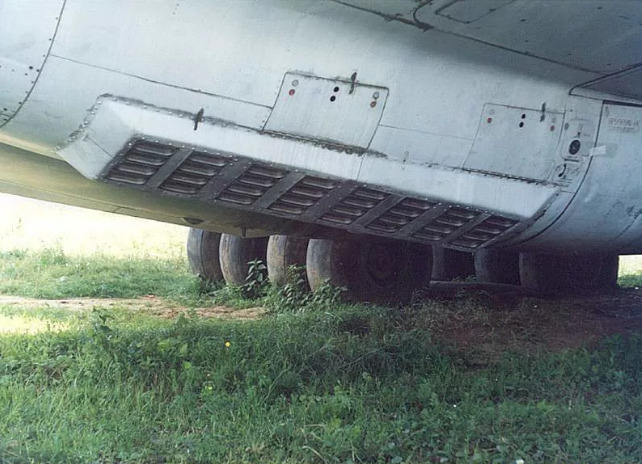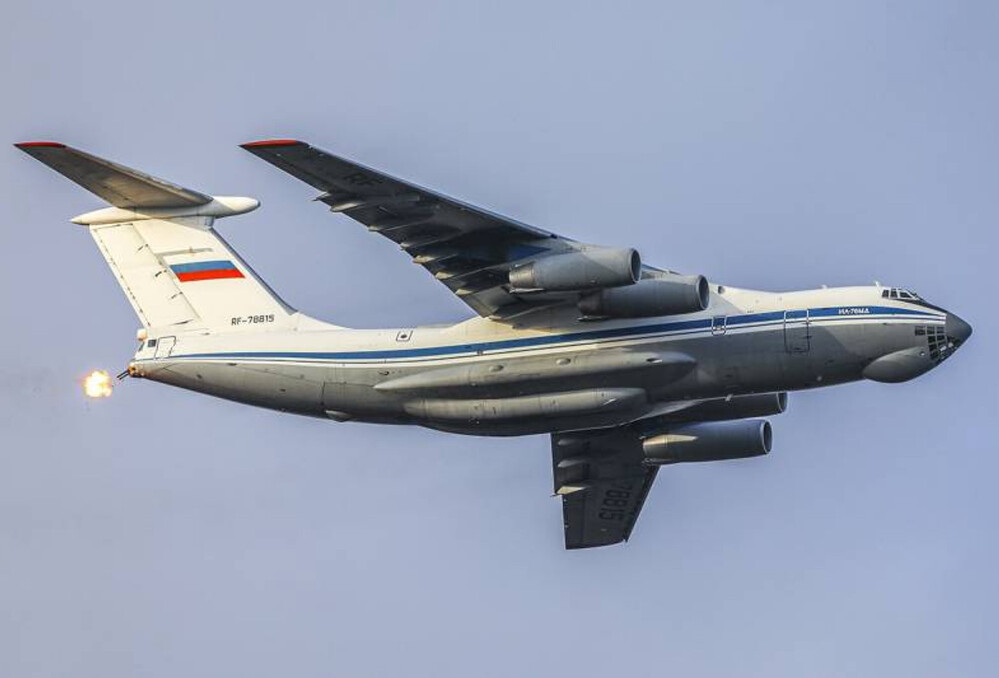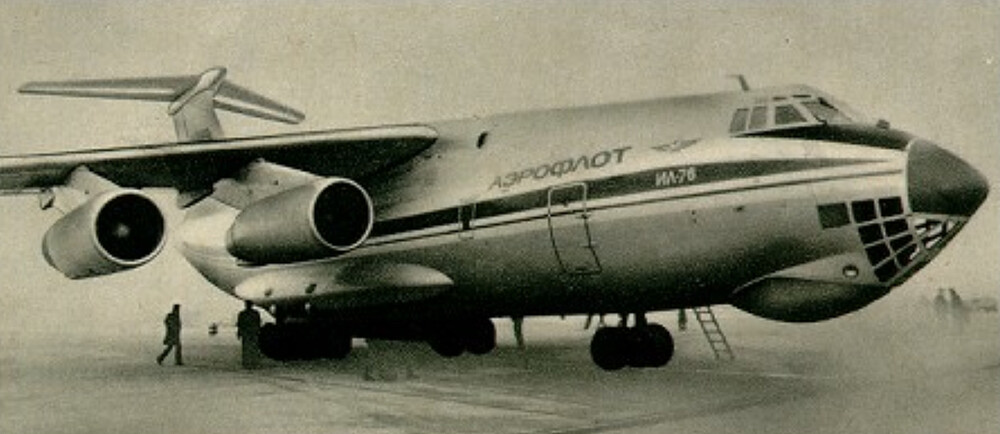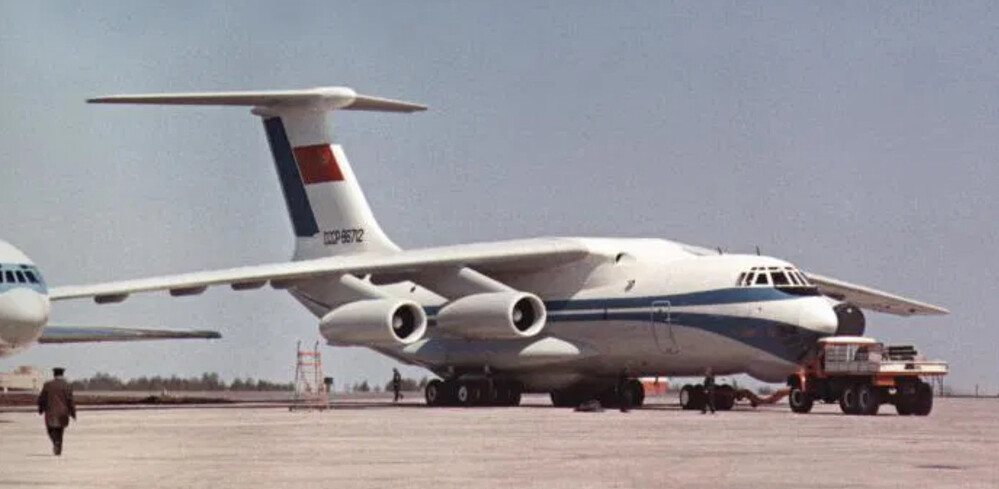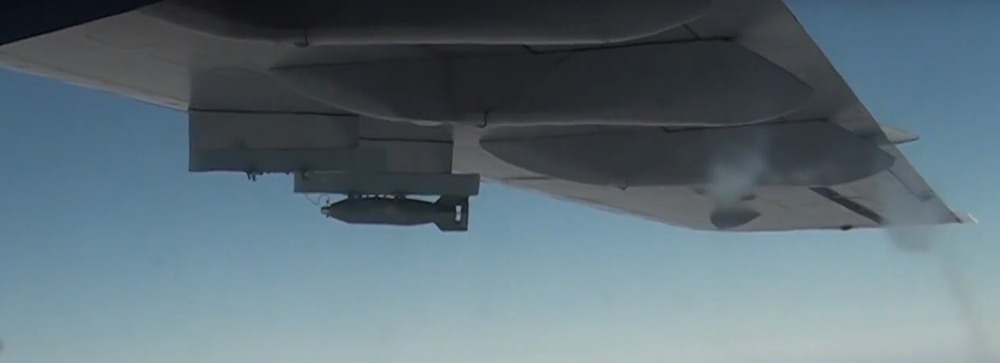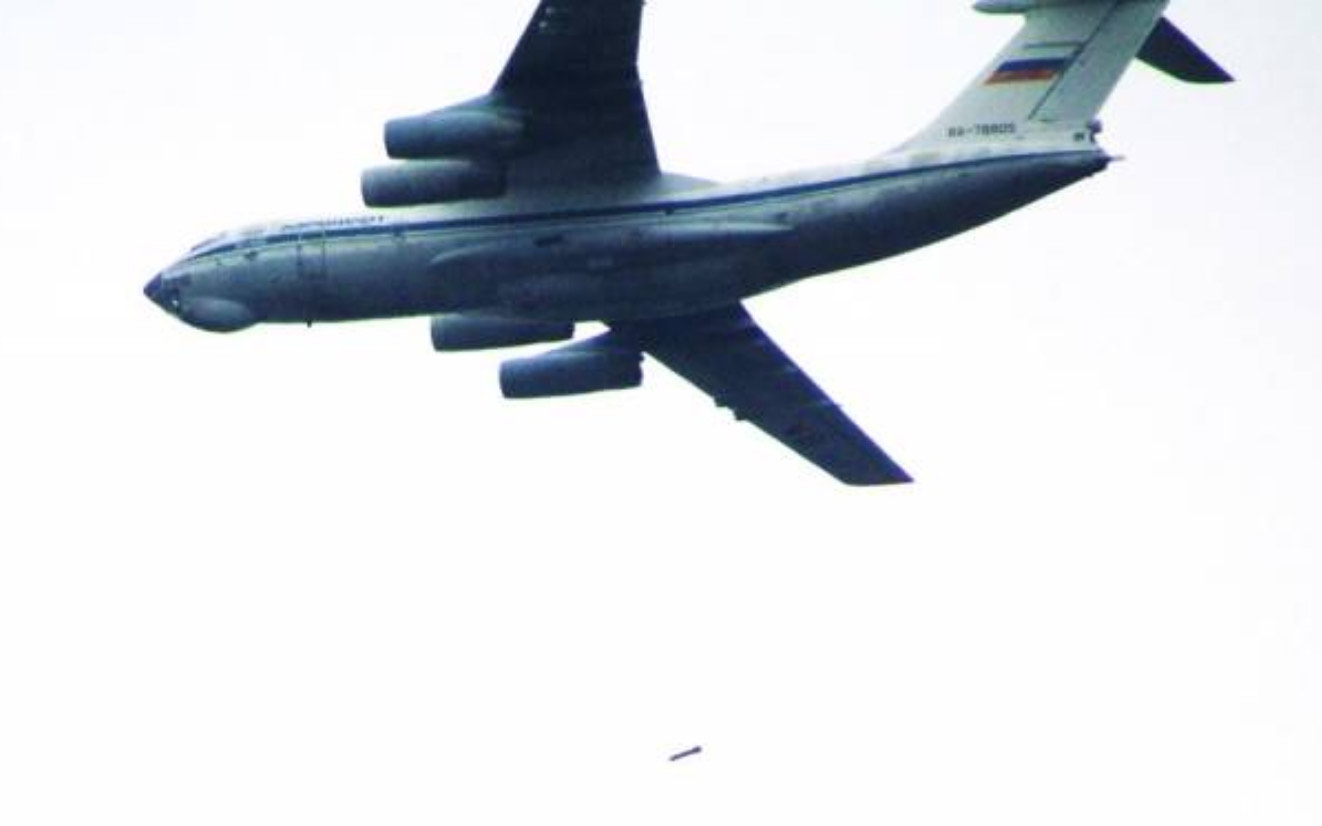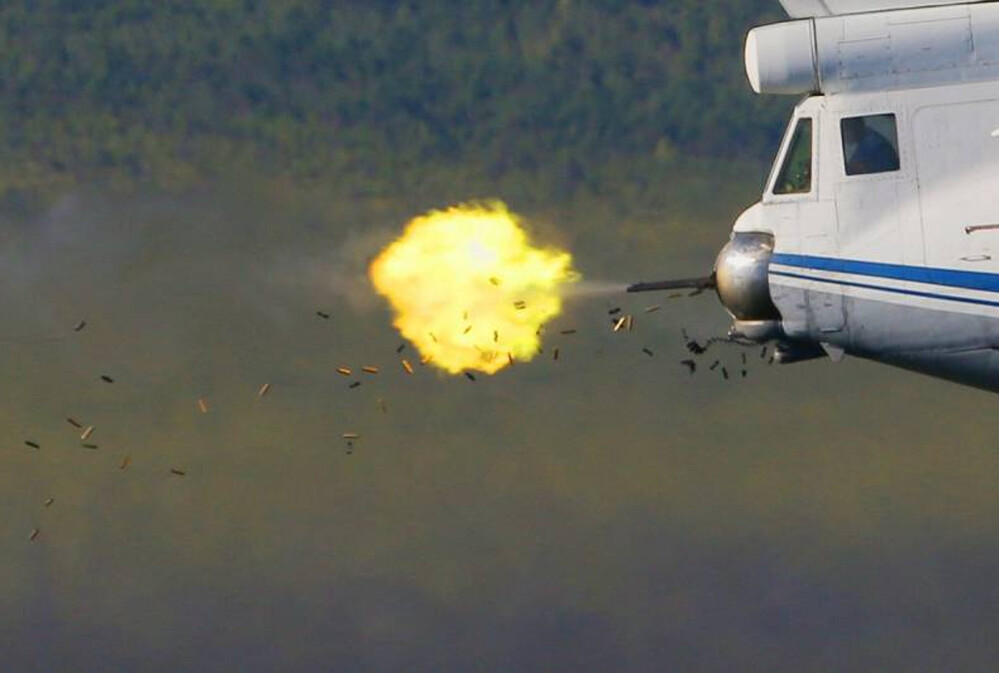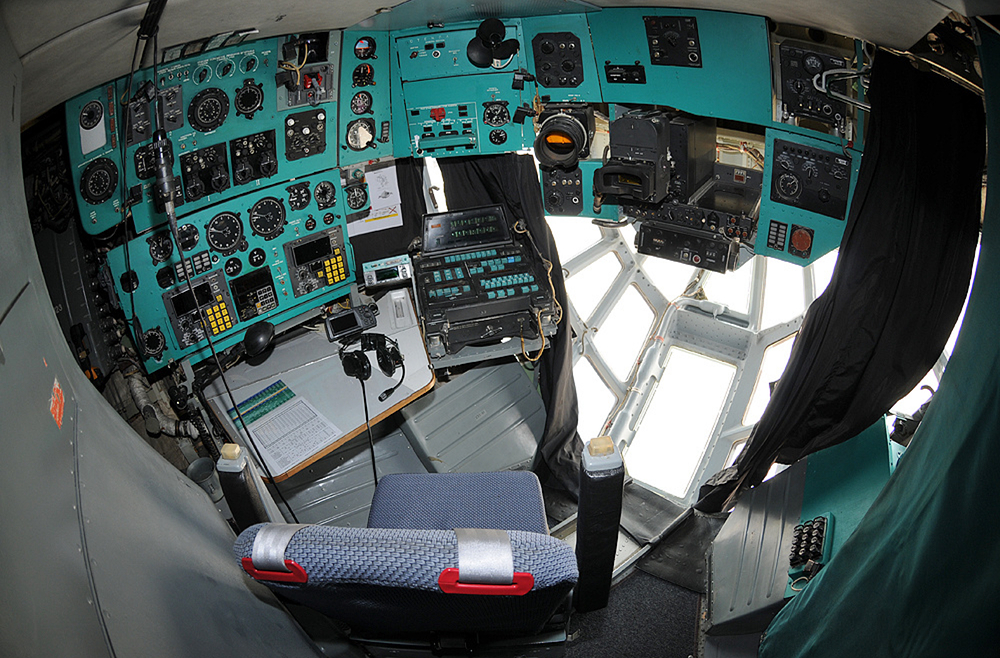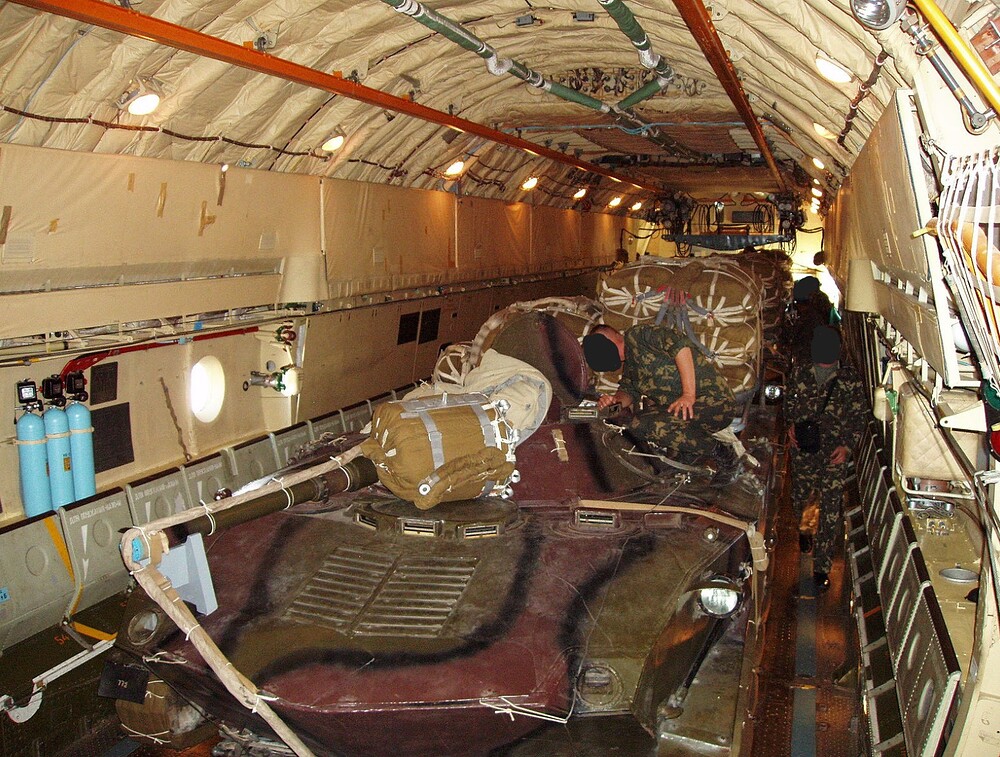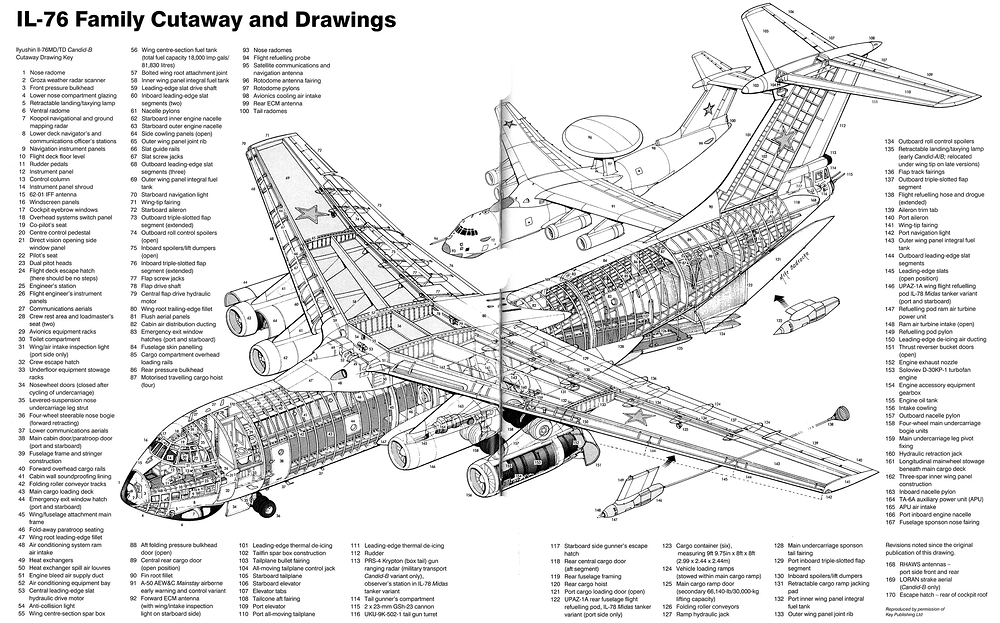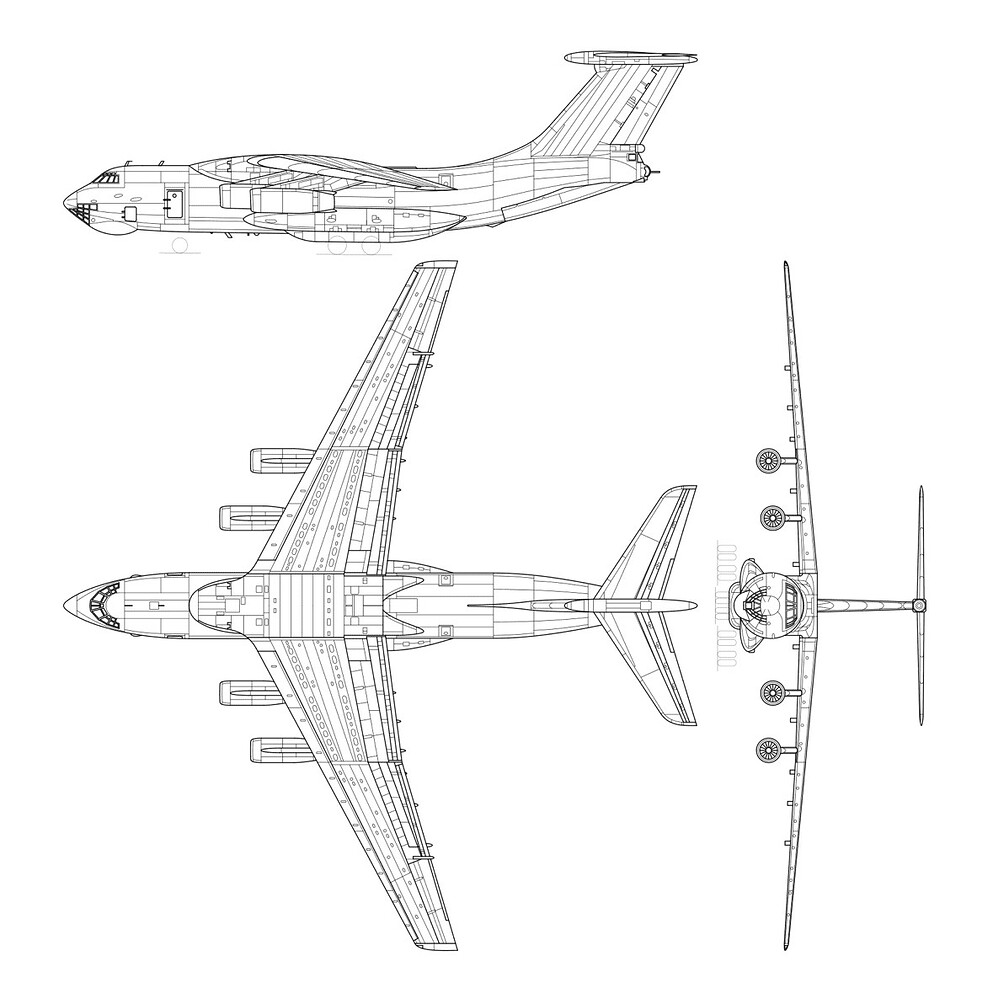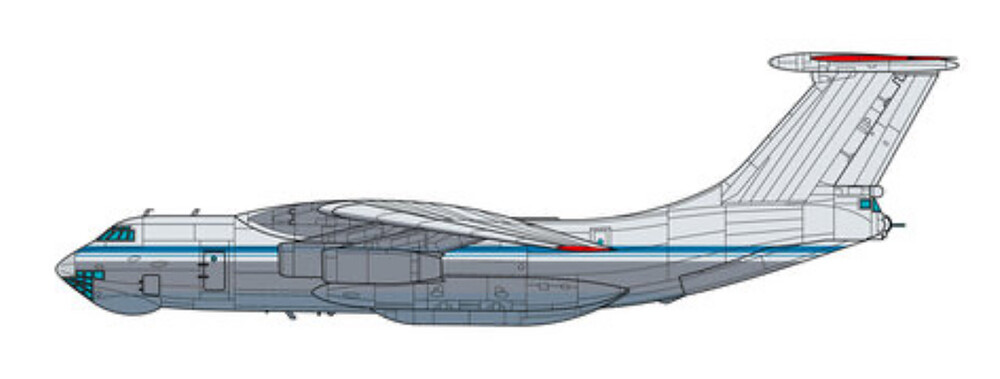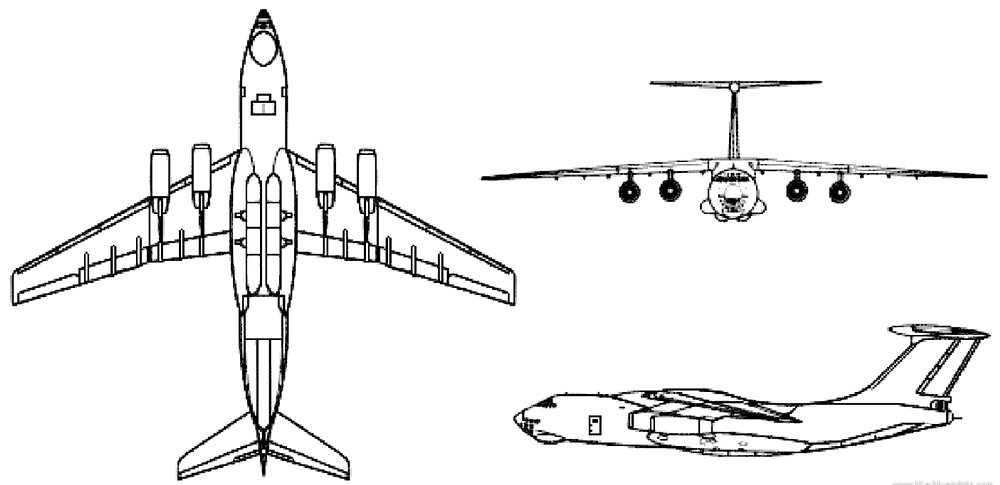Would you like to see IL-76MDB in-game?
How would you like to see Il-76MDB in-game?
- As an Event Vehicle
- As a Premium Vehicle
- As a Squadron Vehicle
- As a Tech-Tree Vehicle
- I said No
IL-76MD “Bomber”
Introduction
Although originally developed as a strategic airlifter, the Ilyushin Il-76, particularly the Il-76MD (unofficially IL-76MDB) variant, has been adapted by Russia for a secondary role as a bomb-carrying platform. While not a dedicated bomber by design, this heavy transport has demonstrated the capability to deploy free-fall ordnance, perform low-level attack runs, and defend itself with onboard weaponry. These adaptations give the Il-76MD a distinctive niche in tactical and unconventional operations.
Short History
Spoiler
The Ilyushin Il-76, introduced in the early 1970s, is a Soviet-designed four-engine strategic airlifter developed to transport heavy cargo to remote or unprepared airfields. Built for rugged performance, it became the backbone of Soviet and Russian airlift capabilities and evolved into numerous variants, including the Il-78 aerial refueler, A-50 AWACS, and the modernized Il-76MD-90A. It can carry up to 50 tons of cargo, is equipped with a rear cargo ramp, and in military versions, a twin 23 mm tail gun turret. The Il-76 has seen extensive use in military operations, humanitarian missions, and disaster relief, with deployments in Afghanistan, Chechnya, Syria, and beyond. Widely exported and adapted for roles ranging from firefighting to cosmonaut training, it remains in active service globally, especially in Russia, India, and China. Its reputation for durability and versatility has made it one of the most enduring and widely used transport aircraft in the world.
The “MD” in Il-76MD stands for Modernizirovannyy Dal’niy, which translates to “Modernized Long-Range” in English. Introduced in the early 1980s, the Il-76MD was an improved version of the earlier Il-76M, featuring increased fuel capacity, a strengthened airframe, and a higher maximum takeoff weight. These enhancements allowed for greater operational range and payload flexibility. While the airframe and core systems remained largely the same, the MD became the most widely produced and exported variant of the Il-76 family, forming the backbone of Soviet and later Russian long-range airlift capability.
Proven Bombing Capability and Hardpoints
Spoiler
In its bomber role, the Il-76MD can be fitted with four underwing hardpoints, located on the outer wings, two on each wing. These stations are compatible with UBD-3DA universal bomb racks and are typically used to carry free-fall bombs, such as the FAB-500 series.
These pylons have been used in trials and live exercises to drop actual loads. In recent exercises, the aircraft has deployed small practice bombs like the P-50T, but the mounting system is structurally rated to carry much heavier ordnance (up to 500 kg per pylon). That gives the Il-76MD a potential external bomb load of up to 2,000 kg, spread across four stations. Internally, the aircraft has no traditional bomb bay, but its cargo hold could hypothetically be adapted to drop parachute-retarded bombs or even improvised payloads from the ramp, though this hasn’t been observed operationally. In practice, the external pylons are the main feature for offensive delivery.
Defensive Armament
Spoiler
A distinctive feature of the Il-76MD, especially compared to Western transports, is its rear gun turret. This tail section is equipped with a UKU-9K-502-1 remote turret mounting two GSh-23L 23mm autocannons, a twin-barrel design with extremely high cyclic fire rates. Each cannon can fire up to 1,800 rounds per minute, giving the turret a combined rate exceeding 3,000 rpm. The total ammunition load is around 400 rounds, typically a mix of armor-piercing and high-explosive incendiary shells.
The tail gunner operates the system from a dedicated station using optical sights and a PRS-4 “Krypton” radar tracker, which helps calculate firing solutions and track targets, including fast-moving aircraft or missiles approaching from the rear. Though largely defensive in intent, this turret has even been used to strafe ground targets during low-altitude attack runs. It is usually a routine tail gunner training exercise. Nevertheless, strafing ground targets using such rear turrets on Soviet bombers was actually recorded in practice during real-world combat, when a lost Iraqi Tu-16 wreaked havoc on an Israeli base, using its bombs and tail turret to cause damage.
The tail turret guided by the PRS-4 “Krypton” radar sight, is effective against airborne targets at ranges of approximately 800 to 1,500 meters. Within this envelope, the guns offer a good balance of accuracy and lethality, particularly when engaging targets in a steady intercept path. With radar assistance, the system can track and engage threats out to about 2,000 meters, though effectiveness diminishes significantly beyond that range due to shell dispersion and energy loss. While the guns can technically reach up to 3,000 meters, their practical kill zone remains firmly under 1.5 kilometers, especially against maneuvering aircraft.
Countermeasures and Survivability
Spoiler
Given its size and relatively low agility, survivability for the Il-76MD depends heavily on its tail-turret and countermeasures.
- Radar Warning Receiver (RWR): The aircraft is fitted with systems like the SPO-10 to alert the crew of radar tracking and missile guidance threats.
- Chaff and Flare Dispensers: The Il-76MD is equipped with multiple dispensers mounted on its fuselage. These can carry several hundred chaff and flare cartridges.
- Decoy Firing via Tail Gun: Interestingly, the GSh-23L tail cannons can also be loaded with special chaff rounds. This means the aircraft’s defensive turret can act as a decoy launcher in emergencies, dispersing countermeasures directly into the missile’s flight path.
- Optional Jamming Equipment: Some Il-76s could be fitted with ECM, though this is not standard across all aircraft.
Operational Use
Spoiler
The Russian Air Force has demonstrated Il-76MDBs during recent military exercises in the Tver region (video attached). During these drills, Il-76MDBs were seen dropping training P-50T bombs from external racks and using their rear-mounted guns in simulated attack runs. There’s no public record of the Il-76MD being used as a bomber in real combat, but the platform has proven it can do the job if necessary. I’ve also attached a video of the Il-76s demonstrating their countermeasure capabilities.
Implementation into War Thunder
Spoiler
Implementing the Il-76 into the game would certainly be challenging, but not impossible. In my opinion, it shouldn’t be placed above BR 9.3 at the time of writing. Historically, it would be going up against missile-equipped fighters, but ideally, these should be limited to early infrared and radar-guided missiles, without advanced seekers or high G potential. This would allow the Il-76 to fully leverage its extensive countermeasure suite, setting 384 flares and chaff on a continuous timer to disrupt incoming threats and forcing most attackers to resort to guns.
If an opponent decides to engage from the rear, they’ll be met with the Il-76’s radar-assisted tail turret. In the hands of a skilled player, this could become a serious threat. While the Il-76 was meant to fly low for its bombing runs in real-life doctrine, I believe its greatest strength in-game would come from high-altitude bombing, where it can more easily evade low-level threats and avoid most fighter squabbles. That said, aiming the bombs will still be a challenge. Because the bombs are mounted far apart on the wings, precision is limited. To help with this, the aircraft should receive a third-person reticle to assist with bomb delivery, though it won’t guarantee accuracy, especially in Ground RB.
Overall, the Il-76MD in this role won’t ever be a grinder, it’ll be more of a fun, meme-worthy aircraft. If introduced as an event vehicle, it wouldn’t disrupt much and could offer a unique gameplay experience for players who enjoy unconventional lineups or Cold War aviation history. I’d personally love to see content creators take on the challenge of flying this aircraft and trying to score kills on ground targets in Ground RB using the tail gunner, it could make for some truly entertaining and memorable moments.
Cockpit and Internals
View
Schematics
View
Il-76MD “Bomber” – Specifications
View
General Characteristics
- Crew: 5–7 (Pilot, Co-pilot, Navigator, Flight Engineer, Radio Operator, and Tail Gunner)
- Length: 46.6 m (152 ft 11 in)
- Wingspan: 50.5 m (165 ft 8 in)
- Height: 14.76 m (48 ft 5 in)
- Wing Area: 300 m² (3,229 ft²)
- Empty Weight: ~92,500 kg (203,928 lb)
- Max Takeoff Weight: 190,000 kg (418,878 lb)
Powerplant
- Engines: 4 × Soloviev D-30KP-2 turbofan engines
- Thrust per engine: 12,000 kgf (117.7 kN / 26,500 lbf)
Performance
- Max Speed: 850–900 km/h (528–559 mph)
- Cruise Speed: ~750 km/h (466 mph)
- Range (max payload): ~4,000 km (2,485 mi)
- Range (ferry): Up to 9,300 km (5,780 mi)
- Service Ceiling: 13,000 m (42,650 ft)
- Takeoff Run (max weight): ~1,700–2,000 m
Armament
- Bomb Load (external):
- 4 × underwing pylons (UBD-3DA racks)
- Typical: 4 × FAB-500 bombs (500 kg each)
- Defensive Armament:
- Tail Turret: UKU-9K-502-1 with 2 × GSh-23L 23mm autocannons
- Ammo: ~400 rounds total
- Fire Control: Optical + PRS-4 “Krypton” radar sight
Countermeasures
- Radar Warning Receiver: SPO-10 (early), updated on later units
- Chaff/Flares: Up to 384 cartridges via multiple APP-50 or ASO-2 dispensers
- Optional: Infrared jammers (e.g., L166 “Lipa”) or ECM pods on select airframes
- Guns may fire decoy flares in emergency configurations
Cargo Capacity (when not bombing)
- Payload: Up to 50,000 kg (110,000 lb)
- Internal volume: ~320 m³
- Vehicles: Up to 3 armored personnel carriers or equivalents
- Troops: Up to 140 soldiers (or 125 paratroopers)
Videos
Sources
View
https://en.topwar.ru/197589-pushki-bomby-i-pomehi-boevye-vozmozhnosti-voenno-transportnogo-samoleta-il-76.html#:~:text=The%20transport%20Il,aircraft%20cannot%20use%20guided%20weapons
Il-76 CANDID
The Russian Air Force has tested a strategic cargo plane in bomber role - The Aviationist
https://physicsbooks.narod.ru/Other/Zvezda.pdf#:~:text=[PDF]%20%2B7,Запас%20топлива%20уменьшился
Watch A Russian Il-76 Cargo Jet Bomb Targets And Strafe Them With Its Tail Gun
